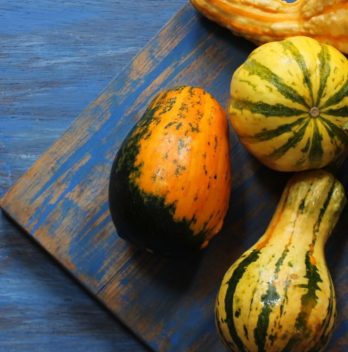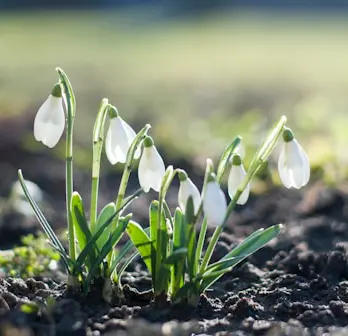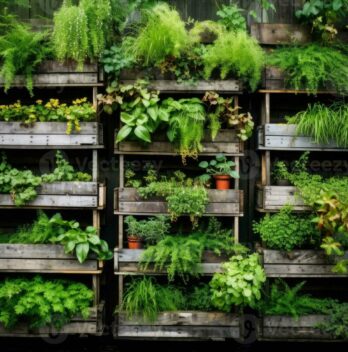It is important to know how long does it take to grow squash before planting so you can prepare for harvesting, storing, and using.
Squash is one of the typical food rich in vitamin A. This is why growing squash is not only good for your eyes but also your overall health. From tender growing zucchini to sweet and dense butternut squash, it is easy to grow and adds immense richness to meals replacing high carb with low nutrient foods.
In this guide, we will look at how long does it take squash to grow and everything else about growing it at home.
How Long Does It Take To Grow Squash?
Winter Squash takes about 80 to 100 days to grow. This type of squash is allowed to mature on the vine, and you can store it for several months. Its skin is thicker and tougher to pierce or cut through.
Summer Squash takes around 55 to 65 days to mature. Summer squash, mostly Cucurbita pepo, are harvested prematurely before their skin hardens. It is best to harvest them when you can pierce the skin easily with a fingernail. When you think of summer squash, think zucchini and yellow squash.
Squash requires enough time to grow before you can harvest it; you will need to apply plenty of water and fertilizer to yield a good crop.

What Type Of Squash Do You Want To Grow?
Having seen how long does squash take to grow, you can choose the best squash variety according to your personal taste. You will also need to know what varieties thrive in your USDA hardiness zones. Before planting, you will also need to know if you’re growing a summer or winter squash. Here are some of the most commonly grown squash varieties you can choose from.
Acorn Squash
Acorn squash is an all-round variety that has a delicious taste. It can be eaten immediately after harvesting or after a month of curing. It is best when consumed within two to three months. Its yellow to orange flesh grows inside a deep green skin with small orange spots. This plant sprawls less than other vining varieties but still requires at least 2 to 3 feet to thrive. Acorn squash is excellent when stuffed with grains or vegetables or cooked in butter and maple syrup.
Buttercup
Buttercup can last up to 5 months after harvesting. It has a sweet potato texture and a delicious flavour. Once harvested, it requires at least one month of curing to bring out its best flavour. Its vines like to travel around, requiring plenty of space when growing. Buttercup squash is excellent when eaten mashed, moistened with water or milk, roasted, or added to warm winter soups.
Delicata
This lovely winter squash has creamy yellow skin with dappled green stripes. It has a mild flavour and works great for stuffing, steaming, or roasting. It takes up less space when growing in the garden than many larger varieties. Be sure to check if you’re growing a vining or a bush type because this variety comes in both.
Gardeners Basics Squash Seeds for Your Non-GMO Heirloom Vegetable Garden
Hubbard
Hubbard is a long-lasting squash variety that can last for 6 months? It is best eaten after one month of harvesting and curing. Hubbards are a beautiful addition to any garden producing fruits that range from pale blue-green to deep orange. Who bags come in various sizes, from a single serving baby variety to 40 pounds.
Spaghetti
The bright yellow spaghetti squash has grown its popularity over the last decade as a replacement for pasta. When this variety is baked, its flesh is easily shredded to look like spaghetti and tastes even better. This variety requires plenty of space to grow. It doesn’t last as long after harvesting, maybe about 2 to 3 months. However, if you can eat it right away, you will enjoy its delicious flavour.
Sugar Pumpkin
Sugar pumpkin variety is the best for making soups, pies and baking. Most people blame its size for being small, but its flavour is more prominent. It is best to harvest sugar pumpkin and eat it right away or keep it for 3 to 4 months to use in your Thanksgiving desserts.
Zucchini
Zucchini is a favourite to many gardeners, thanks to its high production and versatility in the kitchen. It needs a concentrated area of about 4 to 5 feet to thrive and requires enough spacing between 2 plants. 1 or 2 plants are enough since they produce all summer long. Zucchini can be enjoyed in curries, stir-frys, salads, or pasta dishes. It can also be grated into bread and cakes. Try out some of its colourful variety, like yellow zucchini, to spice up your garden.
Planting And Growing
Now that we know how long does it take for squash to grow, we can learn how to plant it.
When Is The Best Time To Plant Squash?
Squash has different seasons that favour them; both summer and winter squash are warm-weather plants. Before planting, wait until the
You can also sow your seeds at least 2 to 4 weeks before the last frost date in a heated greenhouse. The same goes when transplanting seedlings. Don’t set them out until the weather has warmed up to 70 degrees Fahrenheit. Always check with your local extension agent for weather information in your region.
Click Here to Learn more about
How Much Space Does Your Squash Need?
In general, squash plants require enough room to spread out. But the exact space depends on the precise variety or growing, whether it’s vining or bush. Consider the following recommendations for each variety.
For Bush varieties, space them at least 4 to 6 ft apart in rows and 15 to 20 inches a pot for plants.
For vining varieties, space them at least 6 to 12 feet apart for rows and 15 to 20 inches apart for plants. These are a favourite for many gardeners who also plant them in hills. Space your hills at least 6 to 8 ft apart.

FAQs
What month do you plant squash?
Squash are a warm season crop, and should be planted about 3 weeks after the last frost date in your area. For the most part you want to plant them as soon as the soil can be worked, usually around mid March.
However, if you live in an area with short growing season, it’s best to wait until closer to the end of April or early May. When you start planting, choose a sunny spot that has good drainage and is well-fertilized. Make sure to give the plants plenty of room to grow. You can plant in blocks, or just plant seeds directly into the garden bed. They will need to be watered regularly until they germinate. When the seeds germinate, you can either start them in seed flats or plant them directly into the garden bed.
How long does squash take to fully grow?
Squash are a summer squash, not a winter squash. If you want to harvest it in the fall, it will take about 50-60 days from planting time until harvest. Squash don’t really require a ton of work, you just have to make sure that you water them regularly and keep the weeds away so that they get enough sunlight.
Squash plants can be grown from seed or from transplants. They are not very fussy about soil conditions, but do require plenty of sunlight, moisture, and good air circulation. Squash is an annual vegetable that needs to be started indoors in early spring. You can plant the seeds directly into the ground when temperatures begin to warm up.
How often do you water squash?
Squash plants like to have a good amount of moisture but not too much. Too much water can cause the leaves to look puckered and wrinkled, which is called “water burn.” If you live in a warm climate, you may find yourself watering your squash plant every other day.
But in cooler climates, I recommend watering your squash plant once a week. It might take longer for your squash plant to produce fruit, but it will grow more evenly and it will keep producing fruit all summer long!
What can deter squash from growing?
Squash bugs. Squash bugs are a common pest of squash. They love to hide out in the foliage of squash plants, where they feast on the plant’s leaves.
When they’re done feasting, they crawl off to find more leafy things to eat. When squash bugs are around, they can do a lot of damage. The damage they do can range from making your plants look unhealthy to killing the squash plants entirely. And the damage they do doesn’t stop there: they also carry disease. In fact, squash bugs have been known to spread diseases like powdery mildew and cucumber mosaic virus. So what should you do about squash bugs? Well, first, you can try to eliminate them before they cause any damage. Second, if you’re really concerned about squash bugs, you can spray your plants with a pesticide. Finally, you can get some natural methods of squash bug control that don’t involve pesticides.
What type of soil do you use for your squash?
You want to avoid using peat moss, perlite, or vermiculite in your potting mix because they’re porous and allow water to drain out. You can use a composted soil instead, but make sure to add some peat moss or vermiculite to help retain the moisture. And if you plan to grow your squash in a container, choose a soil that has been mixed with a few inches of sand.
Final Thoughts
When you are just starting out on growing squash, you will require some basic information like how long it takes to grow squash to know how to plan your garden. Basic knowledge in gardening will always lead to massive success.

Brian believes the best days are spent outside with soil on your hands. He finds his rhythm in the details of the garden—from carefully tending to established plants to the excitement of propagating new varieties. A true outdoor enthusiast, Brian is here to swap stories, share advice, and celebrate the rewarding work of growing.





